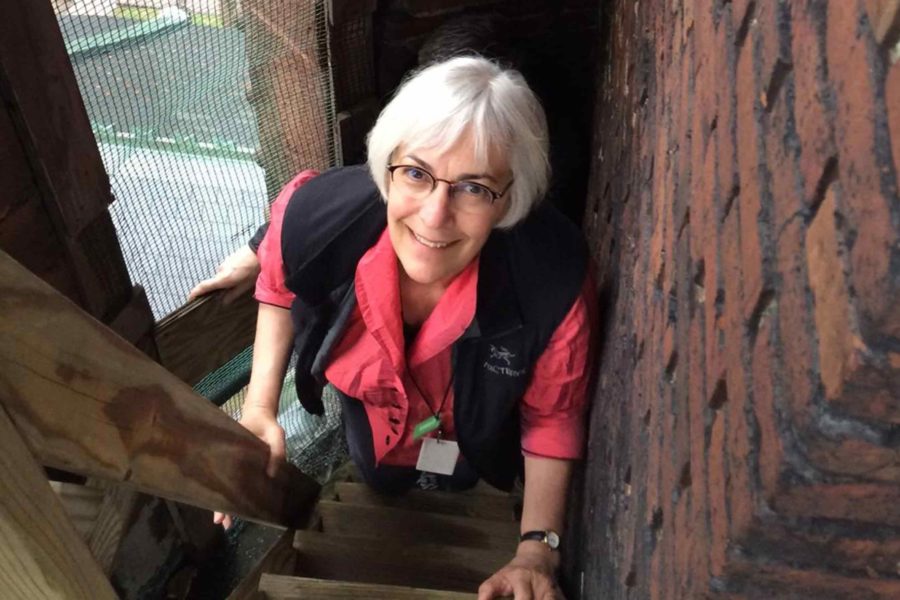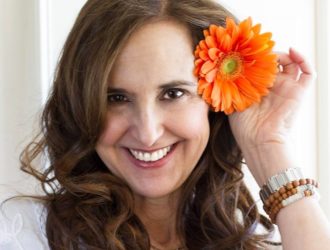For Boston architect Jean Carroon FAIA, preservation is a form of environmental protection — and goes hand-in-hand with addressing the looming crisis of climate change.
The forward thinker becomes president of the Boston Society of Architects AIA this month, and she plans to make her one-year term the “year of carbon,” drawing attention to the role architects can play in cutting emissions of the greenhouse gases that accelerate global warming.
“Part of representing our BSA members is to draw attention to critical issues of our time,” she tells Exhale. “How do we move to a carbon-free economy and how does that create a healthier, more equitable place for all of us?”
As a principal at Goody Clancy, Carroon leads the design firm’s preservation practice. Look around Boston and you can hardly miss the beloved historic landmarks preserved under her expert hand, including the State House, King’s Chapel, the Bunker Hill Monument and the McCormack Post Office and Courthouse. Her longest labor of love has been Copley Square’s Trinity Church, a continuing stewardship project over the past 18 years.
Her passion is not just for preserving history, though. She works to protect all existing buildings against pressures to tear down and replace instead of repair, renovate, adapt.
Other people reuse grocery bags. I reuse buildings. Our consumption-based culture is damaging the planet. It’s absolutely essential that we value what already exists. — Jean Carroon FAIA
“Other people reuse grocery bags. I reuse buildings,” she says. “Our consumption-based culture is damaging the planet. It’s absolutely essential that we value what already exists.”
New construction exacts a steep toll. “Think of it ⎯ when you build a new building, every item has an environmental footprint. It had to be made, had to be packaged,” she says. “Obviously when we build new, we build smarter now, but still, it has an immediate environmental impact. It takes a while after the building is built to pay that back.”
Discovering a calling
At 66, Carroon is at the top of her field. Honors include the Clem Labine Award for Fostering Humane Values in the Built Environment, the Harley J. McKee Award for preservation technology, the BSA’s Women in Design Award of Excellence and the Northeast Sustainable Energy Association’s Professional Leadership Award. She’s a Fellow of the American Institute of Architects (FAIA) — a recognition of excellence bestowed on just 3 percent of AIA members — and a LEED Fellow, for accomplishment in green building.
Her 2010 book, “Sustainable Preservation: Greening Existing Buildings,” details 50 case histories of preservation and adaptive reuse projects that stand out for environmental sustainability and indoor air quality.
All this is not to say her career path was sure or straight.
“I wasn’t one of those people who knew early on in junior high,” she says. “I was a child of the ’60s and ’70s, when we weren’t as focused on careers as people are now.”
Carroon’s family moved often — her father was an engineer working for the government and her mother a school librarian — and she spent her childhood in several southern states.
As a teen in Mississippi, she became a skilled equestrian, riding hunters and jumpers in three-day competitions. After high school, she worked for a few years as a professional equestrian and a race track exercise rider.
Then she took off traveling, landing in Oregon, where she spent 10 years as a whitewater rafting guide. Starting college in her 20s, she chose an independent major at University of Oregon that allowed her to study the economic and environmental forces affecting the health of a nearby watershed area. “It was an exploration of environmental impact that tied to being a whitewater river guide,” she says. And, perhaps not least, she jokes, “It allowed me not to go to class much.”
Living for a few years in Baltimore, she found herself entranced by the city’s history and architecture. Art history classes at Johns Hopkins and a job at the Walters Art Gallery (now The Walters Art Museum) opened her eyes to “the stories and beauty of places.” With this spark ignited, Carroon attended a summer career discovery program at Harvard Graduate School of Design, then returned to University of Oregon to study architecture, earning her master’s in architecture in 1986, at age 34. With Oregon in a recession, she decamped to Boston to start her design career.
Finding a home
After years of cross-country zigzags, she settled in happily to life as a Boston architect. She and her husband, also an architect, have lived in the same house in Somerville for the past 28 years, where they raised three now-grown children. Her Goody Clancy office lies in the heart of Boston’s historic Back Bay neighborhood, a stone’s throw from Trinity Church.
“I love this city,” she says. “Every time I come back, I just have such a clear feeling of being home. I really like the scale, the walkability, the beauty. I love the seasons. I love the buildings. It’s amazing to walk around and see buildings I’ve been up on the pinnacles of.”
Leading by example
Carroon steps into the BSA presidency on Dec. 13. She feels honored to lead one of the oldest AIA chapters, established in 1867. While she is not the BSA’s first woman president (there have been nine others since 1985), she’s aware of the significance in the male-dominated field.
The AIA is bolstering its efforts to foster inclusivity and diversity, and the numbers show there’s plenty to be done. Women make up only 15 percent of licensed architects, according to figures from the City College of New York. Racial/ethnic diversity gaps are even larger, with blacks and Latinos together making up less than 10 percent of architects.
As a woman in the field, Carroon doesn’t feel she’s faced adversity personally, but she hopes to use her top standing to further conversations about equity, unintentional bias and engaging a diverse next generation of architects.
What is the point of life if we don’t live it with joy and conviction, balanced by humility? Just go for it. — Jean Carroon
“When I was approached to run, I felt a special responsibility as a woman to demonstrate leadership in the field,” she says. “We need to work with intentionality to represent the population we are designing for, and that has to do with gender, religion, heritage. We should represent the people that are using our buildings. And that takes some work.”
Carroon hesitates to proffer career and life advice, but following her lead of exploring passions and finding a career over time doesn’t seem a bad strategy.
“People should pursue what they love,” she concludes. “What is the point of life if we don’t live it with joy and conviction, balanced by humility? Just go for it.”



 5 min read
5 min read


